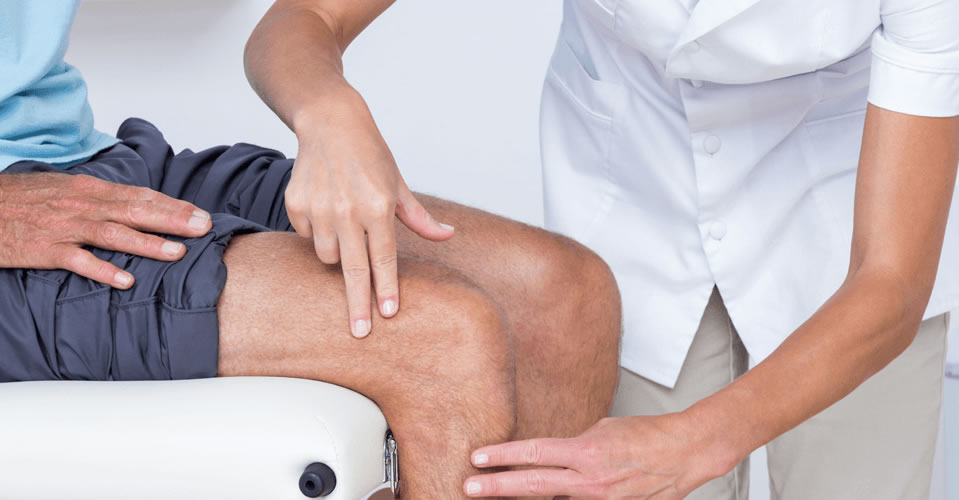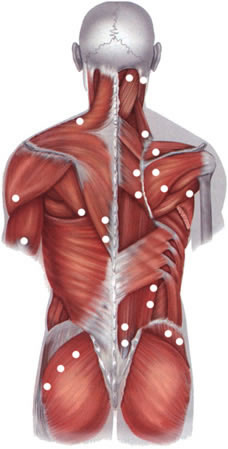Massage therapy
What is Massage Therapy?
Massage Therapy involves the manual manipulation of the body's soft tissues (muscles, connective tissue, tendons, ligaments, and skin) using various techniques like rubbing, kneading, pressing, and vibrating (1, 2). It can be performed using hands, fingers, elbows, forearms, or specialized devices. Massage is often applied using oils, lotions, or creams to reduce friction on the skin.
It is used for a variety of health-related purposes, including relieving pain, reducing stress, rehabilitating injuries, improving circulation, increasing relaxation, and promoting overall well-being (1, 3).
General Physiological Effects
Massage therapy is believed to produce various physiological effects, although the exact mechanisms and extent of these effects are still areas of research (1, 3, 4):
- Skin: May improve skin circulation (vasodilation leading to warmth and color change), potentially aid exfoliation, and stimulate sebaceous glands. Can improve skin elasticity and texture through mechanical effects.
- Muscles: Can help reduce muscle tension, stiffness, and soreness (e.g., delayed onset muscle soreness - DOMS). May improve local blood flow, potentially aiding recovery by delivering oxygen and removing metabolic byproducts. Can address trigger points and muscle spasm.
- Joints & Connective Tissue: May improve joint mobility indirectly by relaxing surrounding muscles and potentially increasing the elasticity of ligaments and joint capsules through movement and stretching components. May help reduce swelling around joints by promoting lymphatic drainage.
- Circulatory System: Can enhance local blood and lymphatic circulation through mechanical pressure and potentially reflex effects, aiding in reducing edema and improving tissue nutrition.
- Nervous System: Can have both stimulating and relaxing effects. May reduce pain perception through mechanisms like the gate control theory or by influencing descending pain modulation pathways. Can decrease sympathetic nervous system activity ("fight or flight") and promote parasympathetic activity ("rest and digest"), leading to relaxation and stress reduction. While massage doesn't directly heal damaged nerves, it might improve the environment for recovery by reducing pressure from tight tissues and improving circulation.
- Respiratory System: Techniques applied to the chest wall (e.g., percussion, vibration, rib mobilization) can potentially aid breathing mechanics and mucus clearance, particularly as part of respiratory physiotherapy (though distinct from general relaxation massage).
- Metabolism: Primarily through effects on circulation and potentially endocrine responses related to relaxation.
Common Types of Massage Therapy
Many different styles and types of massage exist. Some common ones include:
Swedish (Classic) Massage
Often considered the foundation of Western massage. Uses long, gliding strokes (effleurage), kneading (petrissage), friction, tapping (tapotement), and vibration. Generally aims for relaxation, stress reduction, and improving circulation (1, 2).
Deep Tissue Massage
Focuses on deeper layers of muscle and connective tissue. Uses slower strokes and more intense pressure to target chronic muscle tension, adhesions ("knots"), and postural problems. Can sometimes cause temporary soreness (1).
Sports Massage
Tailored to the needs of athletes. Can be used pre-event (to prepare muscles), post-event (to aid recovery and reduce soreness), or for maintenance/injury prevention. Often incorporates techniques from Swedish and deep tissue massage, along with stretching (1).
Therapeutic / Medical Massage
Outcome-based massage applied to address specific health conditions diagnosed by a medical professional. The therapist often uses a variety of techniques (which might include Swedish, deep tissue, trigger point therapy, myofascial release, etc.) targeted at the specific problem area or contributing factors (1, 3). Often part of a broader treatment plan (e.g., alongside physiotherapy or manual therapy).
Therapeutic massage may be used as part of the management for:
- Musculoskeletal injuries (strains, sprains, post-surgery)
- Chronic pain conditions (low back pain, neck pain, osteoarthritis pain)
- Stress-related muscle tension and headaches
- Neurological conditions (for managing spasticity, improving circulation, pain relief)
- Edema reduction (lymphatic drainage techniques)
Indications (Conditions Often Addressed)
Massage therapy may be beneficial as a complementary therapy for symptoms associated with various conditions, including (1, 3, 5):
- Muscle Pain and Stiffness (e.g., back pain, neck pain, fibromyalgia)
- Stress, Anxiety, and Depression (promoting relaxation)
- Headaches (tension-type, cervicogenic)
- Soft Tissue Injuries (sprains, strains - after acute phase)
- Osteoarthritis Pain
- Post-operative Recovery (managing pain, swelling, scar tissue)
- Sports Injuries
- Poor Circulation / Edema (specific techniques)
- Symptoms related to some Neurological conditions (e.g., spasticity in stroke/MS, managing pain in neuropathy - requires specialized training)
- Temporomandibular Joint (TMJ) Dysfunction (targeting masticatory muscles)
Massage is often used alongside other treatments like physical therapy, manual therapy, or medication.
Contraindications and Precautions
While generally safe, massage therapy is not appropriate for everyone or every condition. Contraindications and precautions include (1, 6):
- Absolute Contraindications (Massage should be avoided):
- Acute, unstable medical conditions
- Systemic infections / Fever
- Severe osteoporosis (risk of fracture with deep pressure)
- Bleeding disorders or use of potent anticoagulants (risk of bruising/hematoma)
- Deep Vein Thrombosis (DVT) or known blood clots (risk of dislodging clot)
- Certain skin conditions (severe eczema flare, contagious rashes, open wounds, burns in the area)
- Directly over recent surgery sites or acute injuries (unless specifically indicated and modified)
- Directly over malignant tumors
- Precautions (Requires modification, caution, or avoiding specific areas):
- Pregnancy (requires specialized prenatal massage techniques, avoid certain areas/positions)
- Cancer (massage may be beneficial for symptoms, but requires specialized oncology massage training and physician clearance; avoid direct pressure over tumors/treatment sites)
- Fragile skin (e.g., elderly)
- Peripheral neuropathy (altered sensation)
- Inflammatory conditions (e.g., rheumatoid arthritis flare - avoid inflamed joints)
- Varicose veins (avoid direct heavy pressure)
It's important to disclose all health conditions to the massage therapist before treatment.
Scientific Perspective and Evidence
Research supports the use of massage therapy for certain conditions, particularly for short-term relief (1, 5, 7):
- Pain Relief: Good evidence exists for short-term relief of low back pain and neck/shoulder pain. Evidence is also promising for osteoarthritis pain (especially knee OA) and fibromyalgia symptoms (5, 7).
- Mental Health: Often shown to reduce anxiety, stress, and sometimes symptoms of depression (1, 5).
- Other Areas: Evidence is less consistent or limited for effects on sports performance enhancement, long-term management of chronic diseases, or directly healing specific tissues, though it may facilitate the overall rehabilitation process (1).
Massage is generally considered a complementary therapy, best used alongside conventional medical care and other evidence-based treatments like exercise.
References
- National Center for Complementary and Integrative Health (NCCIH). Massage Therapy: What You Need To Know. Updated October 2019. Available from: https://www.nccih.nih.gov/health/massage-therapy-what-you-need-to-know
- Fritz S, Fritz L. Mosby's Fundamentals of Therapeutic Massage. 7th ed. Elsevier; 2020. (Standard massage therapy textbook)
- Field T. Massage therapy research review. Complement Ther Clin Pract. 2014;20(4):224-229. doi:10.1016/j.ctcp.2014.07.002
- Travell JG, Simons DG. Myofascial Pain and Dysfunction: The Trigger Point Manual. Vol 1. Upper Half of Body. 2nd ed. Williams & Wilkins; 1999. (Context for trigger points sometimes addressed by massage)
- Crawford C, Boyd C, Paat CF, et al. The Impact of Massage Therapy on Function in Pain Populations-A Systematic Review and Meta-Analysis of Randomized Controlled Trials: Part I, Patients Experiencing Pain in the General Population. Pain Med. 2016;17(7):1353-1375. doi:10.1093/pm/pnw099
- Corral K. Contraindications for Massage Therapy. Associated Bodywork & Massage Professionals (ABMP). Accessed [Insert Access Date - e.g., April 20, 2024]. Available from: https://www.abmp.com/textonly/updates/contraindications.php (Example professional organization guidance)
- Furlan AD, Giraldo M, Baskwill A, Irvin E, Imamura M. Massage for low-back pain. Cochrane Database Syst Rev. 2015;(9):CD001929. doi:10.1002/14651858.CD001929.pub3





